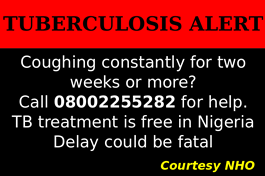Care of the teeth
Good teeth and gum care is an important part of maintaining overall health. Poor oral health is significantly associated with major chronic disease which can cause disability and contribute to low self-esteem.
However, proper teeth and gum care does not require excessive time or expensive oral health instrument. Avoiding simple sugars and implementing daily gentle tooth brushing and flossing is the basic foundation. Additionally, not
smoking, drinking plenty of water and getting regular dental cleanings and checkups are needed to keep gums healthy and teeth cavity-free.
Facts on tooth and gum care
- A tooth is primarily composed of minerals.
- Plaque is a sticky, colourless film of bacterial that stick to teeth.
- When bacteria consume sugar, they produce acids, which eat away at the tooth’s enamel.
- Tobacco use is one of the most significant risk factors associated with the development of gum disease.
How to brush
Brushing teeth with fluoridated tooth paste is the best method of reducing plaque. The American Dental Hygienists Association (ADHA) recommends brushing for 2 minutes, twice daily.
Keep the following tips in mind:
Proper brushing technique cleans teeth and gums effectively.
- Use a medium-bristled toothbrush to prevent damage to the enamel, only use a medium-bristled tooth brush.
- Brush at a 45-degree angle: the angle of the brush is important, the toothbrush should be place against the teeth at a 45 –degree angle to the gum-line.
- Motion correctly: using short, gentle back-forth and small circular motion, all tooth surface will be gently brushed. Avoid a sawing or scrubbing motion.
- Brushing the tongue: use your toothbrush to do a light brushing of the tongue.
- Keep the mouth clean after brushing: avoid eating for 30mins after brushing.
- A toothbrush should be replaced at least every 3 months, as well as after any illness.
Flossing
Flossing is simply the practice of cleaning between your teeth using dental floss, It is a good way to remove plaque.
Daily flossing is necessary for removing plaque and food particles that your toothbrush cannot reach.
The area just beneath the gum line and the tight spaces between teeth are vulnerable areas where plaque can build up and turn to tartar.
If you do not floss regularly, the buildup of plaque and tartar can lead to cavities as well as gum disease.
Foods to eat or avoid
There is overwhelming evidence that sugars are the biggest dietary contributor to dental disease. Specifically, it is the amount and frequency of free sugars consumed that determines the severity of decay.
Foods and drinks to avoid
Sugar and candy intake should be limited; this is because the bacteria in the mouth need to produce the acids that weaken enamel and damage teeth. Each time the teeth are exposed to sugar, the demineralization process begins and it can take up to an hour for the mouth to return to normal non-acidic PH conditions.
Specifically try to avoid
- Sodas
- Candy
- Sweets sugary snacks
- Chocolates
- Cookies
- Fast food, which is known to contain sugars other fermentable carbohydrates are also involved.
- Bread
- Crackers
- Breakfast cereals
Consuming a variety of foods rich in nutrients and avoiding those that contain sugars and starches is important for keeping teeth and gums healthy.
Food and drink to consume with caution
Crunchy fruit and vegetables such as apples, pears, celery and carrot are good in between meals as the chewing activity increases the production of saliva and saliva help protect teeth.
Water should be consumed liberally and any soft drink or fruit juice, beverage (diet and regular) should be consumed with caution.
Most soft drinks contain phosphoric acid which interferes with body’s ability to absorb calcium. Fruit juices will also bathe teeth in damaging sugar.
Drinking these beverages through a straw can help minimize the time the teeth are exposed to the acid.
Chewing sugarless gum for 10 minutes after meals snacks can also help reduce decay.
In conclusion, oral health is a key indicator of overall health, well-being and quality of life. It forms an integral part of general health of an individual. The home practice of good oral hygiene and scheduled regular dental check-ups keeps your smile, and yourself healthy.





0 Comments
No Comments Yet!
You can be first to comment this post!